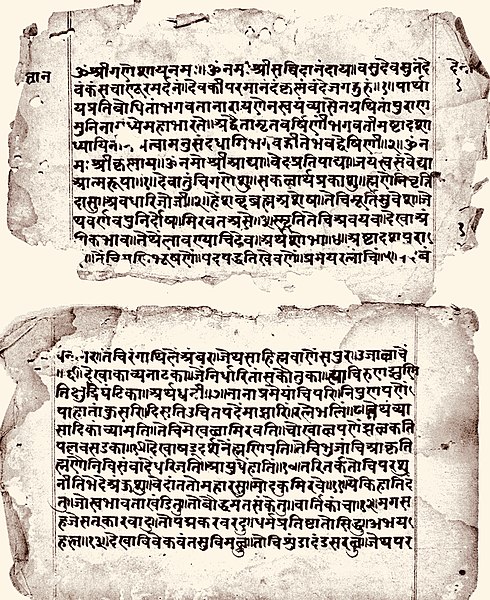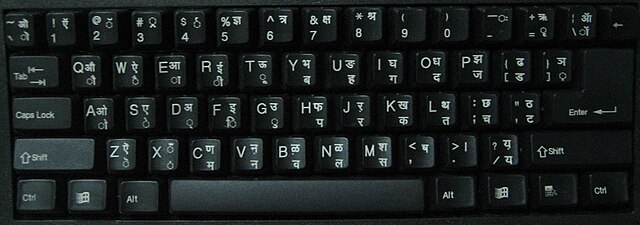Devanagari is an Indic script used in the northern Indian subcontinent. Also simply called Nāgari, it is a left-to-right abugida, based on the ancient Brāhmi script. It is one of the official scripts of the Republic of India and Nepal. It was developed and in regular use by the 7th century CE and achieved its modern form by 1000 CE. The Devanāgari script, composed of 48 primary characters, including 14 vowels and 34 consonants, is the fourth most widely adopted writing system in the world, being used for over 120 languages.
A few palm leaves from the Buddhist Sanskrit text Shisyalekha composed in the 5th century by Candragomin. Shisyalekha was written in Devanāgarī script by a Nepalese scribe in 1084 CE. The manuscript is in the Cambridge University library.
The Jñānēśvarī is a commentary on the Bhagavad Gita, dated to 1290 CE. It is in written in Marathi using the Devanāgarī script.
A mid-10th century Sanskrit land grant for a college, written in Devanāgarī, and discovered on a stone buried in north Karnataka. Parts of the inscription are written in Canarese script.
Devanāgarī INSCRIPT bilingual keyboard layout
The Brahmic scripts, also known as Indic scripts, are a family of abugida writing systems. They are used throughout the Indian subcontinent, Southeast Asia and parts of East Asia. They are descended from the Brahmi script of ancient India and are used by various languages in several language families in South, East and Southeast Asia: Indo-Aryan, Dravidian, Tibeto-Burman, Mongolic, Austroasiatic, Austronesian, and Tai. They were also the source of the dictionary order (gojūon) of Japanese kana.
A fragment of Ashoka's 6th pillar edict, in Brahmi, the ancestor of all Brahmic scripts





